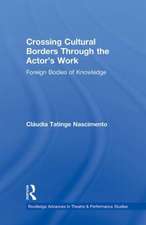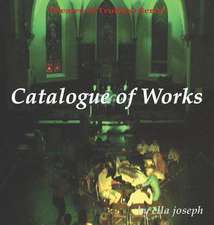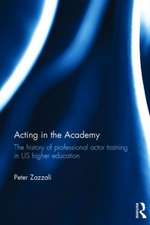Eastern European Theatre After the Iron Curtain
Editat de Kalina Stefanovaen Limba Engleză Hardback – 10 ian 2000
An important new survey of Eastern European theater after the collapse of the Soviet Union.
Explores all aspects of theater, from playwriting, directing and acting, to repertoire creation and theatre management. Uses material never previously published on theatre life during the Communist years. Compares theater before and after the political changes in Albania, Bulgaria, Czech Republic, Hungary, Latvia, Lithuania, Moldova, Poland,Romania, Russia, Slovakia, Ukraine. Chapters begin with introductions by well-known theatre professionals or lively interviews with a major directors or playwrights - including Yury Lyubimov, Václav Havel, Andrei Sherban and Ismail Kadare.
Preț: 768.30 lei
Preț vechi: 1241.78 lei
-38% Nou
147.03€ • 152.94$ • 121.38£
Carte tipărită la comandă
Livrare economică 15-29 aprilie
Specificații
ISBN-10: 9057550547
Pagini: 282
Dimensiuni: 152 x 229 mm
Greutate: 0.68 kg
Ediția:1
Editura: Taylor & Francis
Colecția Routledge
Locul publicării:Oxford, United Kingdom
Public țintă
Postgraduate and UndergraduateRecenzii
Cuprins
Acknowledgements
List of Plates
Introduction by John Elsom
1. Albanian Theater 2. Bulgarian Theater 3. Czech Theater 4. Hungarian Theater 5. Latvian Theater 6. Lithuanian Theater 7. Moldovan Theater 8. Polish Theater 9. Romanian Theater 10. Russian Theater 11. Slovak Theater 12. Ukrainian Theater
Notes on Contributors
Index
Descriere
Chapters begin with introductions by well-known theatre professionals or lively interviews with a major directors or playwrights.















